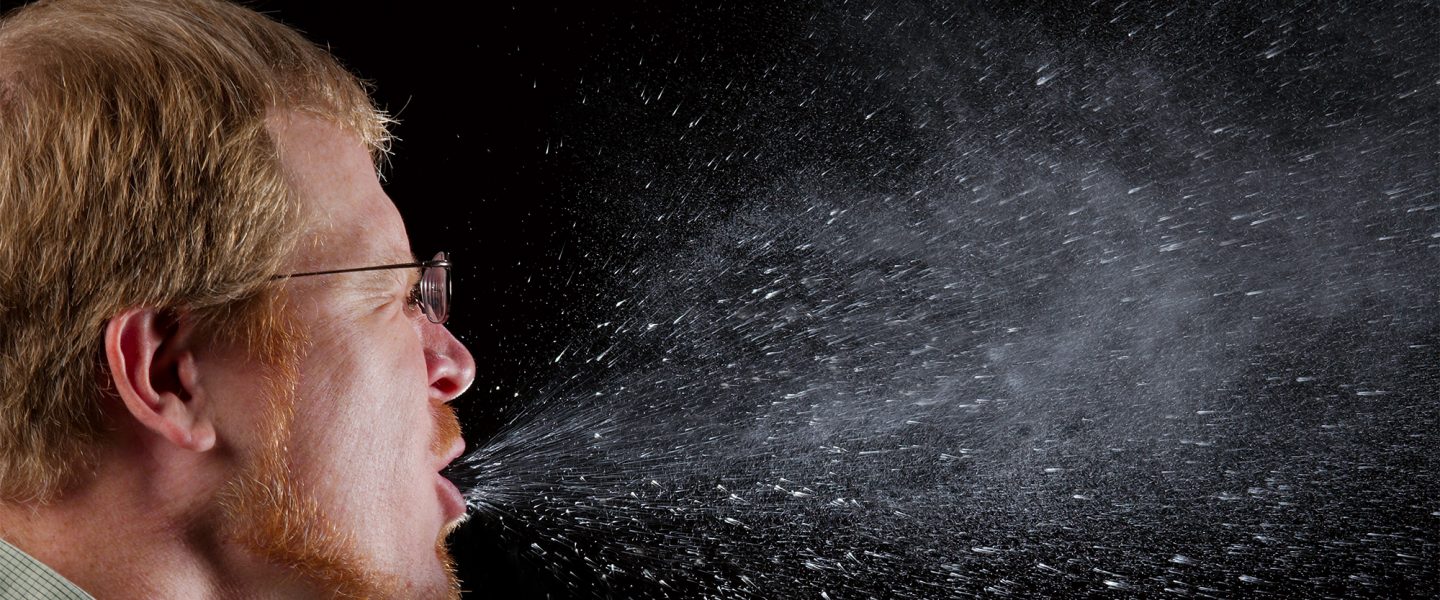No matter what your lifestyle, no matter what your risk group, you may need to read this.
|
Listen To This Story
|
Are you overly worried about catching monkeypox, or not worried enough? After reading about the facts below — some of which are very curious indeed — you will at least understand what the possibilities are.
The disease is still spreading, although the rate of spread has recently slowed down. Status as of September 2: In the US, 19,962 confirmed cases. (Most are in California, New York, Florida, Texas, Illinois, and Georgia.) In the world — outside of Africa, where the disease is endemic — 52,516 cases were reported. (Most were in the US, Spain, Brazil, Germany, UK, and France.)
You can get it without belonging to the most common risk group.
That risk group includes men who have sex with men, gay and bisexual men — in other words, people who transmit the disease through sexual contact. (Now included in the high risk group, at least in the US, are Black and Hispanic people.) However, heterosexual men and women — and 18 children, including an infant, in 10 American states — have also been infected, presumably through nonsexual contact with infected persons.
You can get it despite having had a smallpox vaccination.
In a Spanish study published in August by The Lancet, 18 percent of monkeypox patients had childhood smallpox vaccinations. The authors say further research needs to be done on this issue.
You can get it without knowing it.
Recently, 13 completely asymptomatic men who have sex with men were surprised to learn they had monkeypox when tested with anorectal swabs for other diseases.
You can get it from people who don’t obviously have it.
According to the July, 2022, Department of Homeland Security (DHS) Science and Technology Report, page 8, “Humans can be contagious before a visible rash appears and can continue shedding the virus weeks after symptoms have dissipated.”
You can get it just from respiratory droplets.
This is true according to the New England Journal of Medicine, Johns Hopkins University, and others. And it’s not surprising since some have lesions on their tonsils, and in the oral and perioral area — and respiratory symptoms do include cough.
NOTE: This is not the virus’s main route of transmission, but, for those not in the high risk group — it can sometimes be the only route of transmission.
You can get it without knowing how.
A woman in Georgia believes she got it while working as a cashier. She said she had no close contact, sexual or otherwise, with an infected person. And she has lesions only on her face.
You can get it from things.
The things are called fomites, inanimate objects, like table tops, doorknobs, bedding, and clothing that contain infectious agents that, if alive and replicating, can transfer disease to a new host.
About those things.
Monkeypox can survive for weeks in water, soil, and refrigerated food, according to the DHS. Scarier yet, the virus was found alive 15 days after a patient’s home was left unoccupied, according to the Centers for Diseases Control and Prevention (CDC).
A UK health care worker is thought to have caught monkeypox while changing bedding in an isolation room for infected patients. Researchers found the virus in air samples collected after bedding changes, supporting the theory that the virus may be present in suspended skin particles or dust. (For a less scary perspective on fomites, go here.)

Prevention
The Biden administration announced that it is making a special effort to make the vaccine available to people “who might struggle to find appointments or worry about the stigma of attending public vaccination events.” Go here to learn more.
In the meantime, the CDC advises you to (1) avoid skin-to-skin contact with someone who has a rash that looks like monkeypox — the most common mode of transmission; (2) avoid contact with objects or materials that an infected person has used; (3) wash your hands thoroughly and often.
Missing from this list is the suggestion that you wear a mask when appropriate. You may not know if the person next to you on a plane or train or other confined space — where close contact is unavoidable — is infected with this virus.
This is why we emphasize the underappreciated fact that the disease can be spread by respiratory droplets for short distances, as documented above. However, “These aren’t secretions that are airborne for long periods of time,” said Robert Pitts, MD, an infectious disease specialist at New York City-based NYU Langone Health.
Originally the CDC did advise travelers to wear a mask. In June, that guidance was removed because it “caused confusion,” the CDC told Reuters. And the CDC stated — with a bewildering lack of caution — that it “hasn’t heard of anybody catching monkeypox while sitting on an airplane near somebody with monkeypox, even on a long international flight.”
That was said back in June — when the pox had only been in the US for a month. It was way too soon to tell.
Related: Watch Out for Monkeypox — and Watch Out for BS About It – WhoWhatWhy
Wear a Mask
Wouldn’t it be nice to have a mask designed by, say, Prada or Givenchy, in collaboration with Elon Musk and NASA? A mask that was effective, comfortable, and stylish. And it would keep out all kinds of bugs — COVID-19, monkeypox, influenza, measles, the common cold, and other viruses and bacteria. Someday we may have such a fashionable health accessory. But, in the meantime, please make do with the best mask available, the N95. Many pharmacies hand out bundles of these masks for free.
You may need a mask anytime you are in a crowd, or a confined space, such as an elevator or plane ride. As we have said in the past, nasty stuff is just a plane ride away.
If you have the pox, please wear it when you’re around others.
Wear it if you are taking care of someone with the pox. Go here to learn more about living with an infected person.
Think You Were Exposed?
People who have been exposed to an infected person or animal should monitor themselves for three weeks afterward:
-
-
- Take your temperature twice daily.
- If you develop a fever (100.4 F or above), chills, swollen lymph nodes, or a new rash, immediately self-isolate and contact your local or state health department for further guidance.
- If you only have chills and swollen glands but no fever or rash, isolate at home for 24 hours.
- If you get a fever during this time, contact the health department.
- If you don’t develop a fever but still have chills or swollen glands after 24 hours, contact your doctor for a diagnosis.
-
Course of the Disease
Monkeypox has a long incubation time and can generally take four to 21 days to produce symptoms after exposure. Typically, symptoms start with a “general, all-over feeling of being ill.” Flu-like symptoms such as fever and muscle aches develop. Lymph nodes may become swollen. Respiratory symptoms include sore throat, nasal congestion, and cough. Then comes the rash (although it can appear first). It can begin on the face and spread elsewhere. Or, if acquired during sexual contact, can begin in the genital or perianal areas.
And the pain can be unbearable.
The rash is expected to dry up and crust over in a week or two. Some experts say you are no longer contagious after the skin lesions have healed — but, as mentioned above, other studies show that you can be contagious weeks after symptoms have gone.

Treatment
Tecovirimat (TPOXX), an antiviral created for smallpox (which is similar to monkeypox), was reported to be “safe and effective for the treatment of monkeypox symptoms and skin lesions,” according to a small study published August 26. However, they point out, “We have very limited clinical data on the use of tecovirimat for monkeypox infection. There is much to learn about the natural progression of the disease and how tecovirimat and other antivirals may affect it,” said lead author Angel Desai, an adult infectious disease specialist at UC Davis Health. Go here to learn more about TPOXX. Research is ongoing.
Not an STD
Outside Africa, monkeypox is mostly transmitted through sexual encounters, but it would be misleading to call it an STD, or sexually transmitted disease, even though the virus has been found in seminal fluid. Experts say the term could undermine efforts to identify those infected since people who have had no sexual contact at all with an infected person may falsely assume they couldn’t possibly have the disease, or be contageous. In addition, the term creates a stigma that could be used to vilify gay and bisexual people.
This Section Is Not for Everyone
Below — repeated word for word — are tips being disseminated by the Human Rights Campaign for those sexually involved with a high risk group.
-
-
- When to avoid sex: If you or your partner has or recently had monkeypox symptoms, or you have a new or unexplained rash, immediately isolate and see a health care provider. In some cases, symptoms may be mild, and some people may not even know they have monkeypox.
- Contactless sexual activities: Reducing your chances of spreading the virus would include getting more creative in contactless sex such as virtual sex, or masturbation at least 6 feet away. Avoid kissing, cover lesions and rashes, and wash sheets, clothes and sex toys. Do not share sex toys.
- Communicate: Be transparent with sexual partners about any recent illnesses or new sores you’ve experienced and be aware of anything new on you or your partner’s body.
- Your protection will be highest two weeks after your second dose of the monkeypox vaccine. Reducing or avoiding behaviors that increase risk of monkeypox between your first and second shots are recommended. Consider a brief break of activities that may increase exposure to the virus.
- Get contact info: Be sure to exchange contact info with any new sexual partner to allow for sexual health follow-up, if needed.
- Condoms: Condoms may protect your anus, mouth, penis, or vagina from exposure to monkeypox. However, condoms help but are not completely foolproof in MPV prevention and do not protect other parts of your body.
- Raves, parties, clubs, saunas, bathhouses, & festivals: events where there is minimal clothing, kissing, direct, personal, often skin-to-skin contact has some risk. Avoid any rash you see on others and consider minimizing skin-to-skin contact.
- Other parties: Spaces like back rooms, saunas, sex clubs, or private and public sex parties, where intimate, often anonymous sexual contact with multiple partners occurs — are more likely to spread monkeypox.
- For more information about healthy sex and MPV prevention visit the CDC resource.
-




